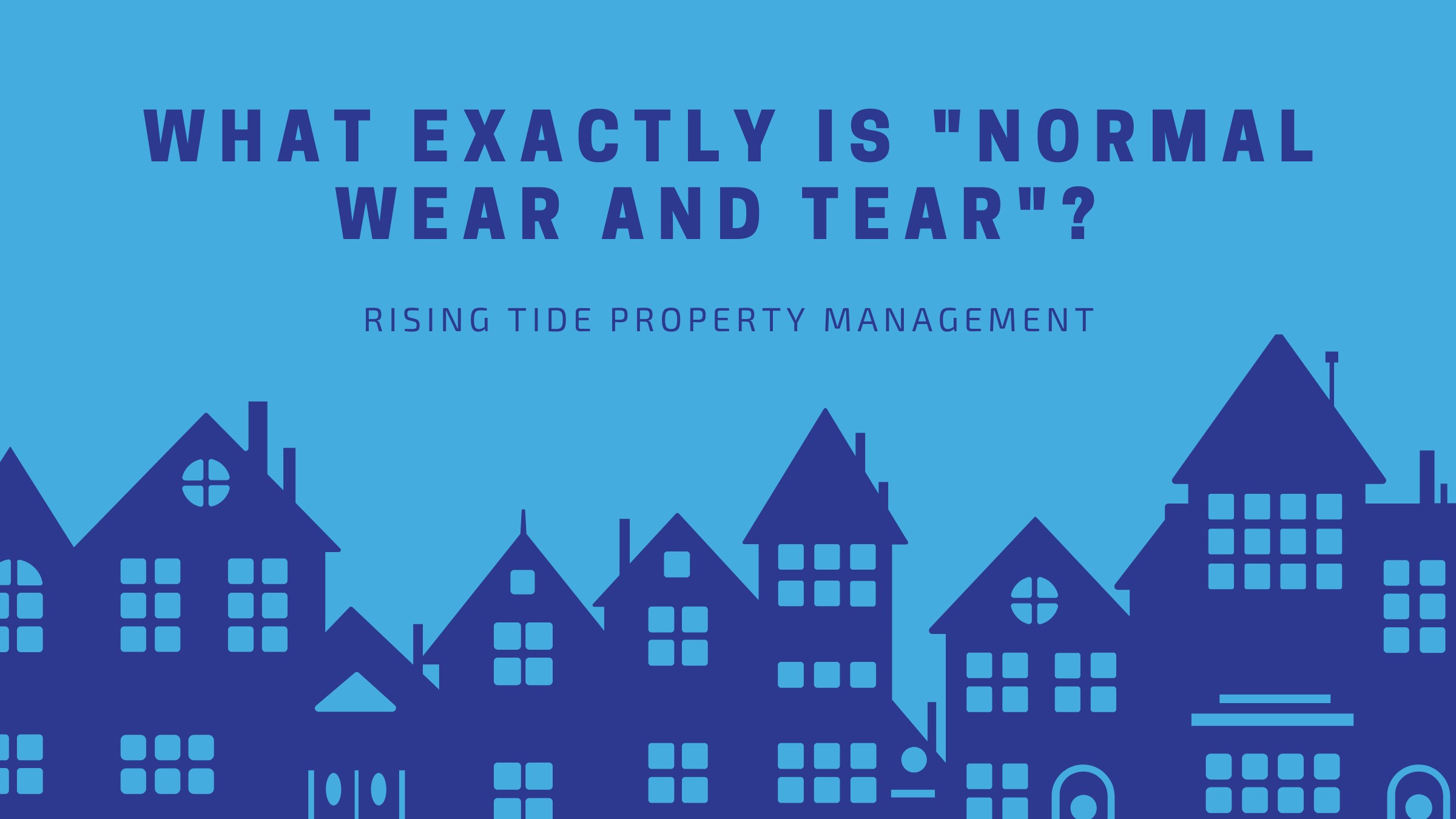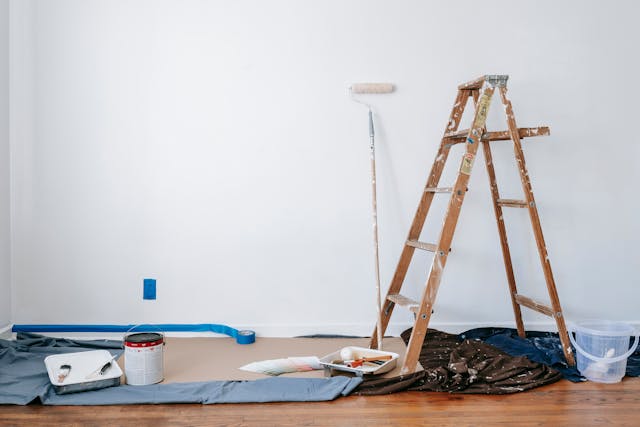What Exactly is “Normal Wear and Tear”?
Key Takeaways
- Know the Difference: Normal wear and tear is natural deterioration from regular use, while tenant-caused damage can be avoided or repaired at the tenant’s expense.
- Security Deposit Guidelines: Landlords can’t use the security deposit for wear and tear but can deduct for damage caused by negligence or misuse.
- Preventive Measures: Regular inspections, durable materials, and clear lease agreements can help minimize excessive damage and prolong property life.
- Documentation is Key: Detailed move-in and move-out inspections with photos and checklists protect both landlords and tenants.
Owning a rental property comes with numerous responsibilities, one of the most important being understanding the difference between normal wear and tear and tenant-caused damage. This distinction is vital for managing security deposits, handling maintenance, and ensuring your property stays in good condition for future tenants.
At Rising Tide Property Management, we know that many property owners face disputes over what qualifies as reasonable wear and tear versus damage caused by neglect or misuse. As a rental property owner, it’s essential to understand the concept of normal wear and tear, how it differs from property damage, and the best ways to protect your investment.
Defining Normal Wear and Tear
Normal wear and tear refers to the gradual deterioration of a rental property due to everyday use. Even with responsible tenants, rental units experience natural aging, leading to minor imperfections over time. This kind of deterioration is expected and legally cannot be deducted from a tenant’s security deposit.
Examples of Normal Wear and Tear:
- Faded or slightly worn carpet from foot traffic.
- Minor scuffs on walls from furniture placement.
- Slightly loose door knobs or handles from frequent use.
- Faded or chipped paint due to sunlight exposure.
- Worn kitchen countertops from regular food preparation.
- Slowly deteriorating grout or caulking in bathrooms.
- Slightly warped wooden floors due to temperature and humidity changes.
These minor issues occur naturally and do not indicate misuse by the tenant. As a landlord, it’s essential to budget for routine maintenance and repairs to address wear and tear over time.
Defining Property Damage
While normal wear and tear happens over time, tenant-caused damage results from carelessness, negligence, or intentional actions. Unlike wear and tear, property damage can be deducted from the security deposit.
Examples of Tenant-Caused Damage:
- Burns or large stains on the carpet from spills or cigarettes.
- Holes in walls from nails, screws, or impact damage.
- Broken windows or doors due to rough handling.
- Pet damage, such as scratched floors or chewed cabinets.
- Severely clogged drains due to improper use.
- Mold growth from neglect (such as failing to report leaks).
- Missing appliances or fixtures.
Security Deposits and Wear and Tear
A common area of confusion for landlords is whether a security deposit should cover repairs. The answer depends on the cause of the damage. Security deposits cannot be used for normal wear and tear. However, they can be used to repair excessive damage caused by the tenant.
What Landlords Can Deduct From a Security Deposit
- Replacing carpet due to large stains or burns.
- Repairing holes in the walls beyond minor nail marks.
- Replacing broken fixtures or appliances.
- Addressing excessive pet damage.
What Landlords Cannot Deduct From a Security Deposit:
- Repainting the unit due to minor scuffs.
- Replacing carpet that has naturally worn down over time.
- Fixing small nail holes from hanging pictures.
- Minor fading of flooring or walls.
To avoid disputes, landlords should clearly outline maintenance expectations in the lease and conduct move-in and move-out inspections with detailed documentation.
How to Document Normal Wear and Tear and Damage
To fairly assess a rental unit’s condition, landlords should follow a structured inspection process:
1. Conduct a Move-In Inspection
Before a tenant moves in, document the property’s condition thoroughly. Take high-resolution photos and videos of walls, floors, appliances, and fixtures. Have the tenant sign an inspection report confirming the unit’s state.
2. Encourage Routine Maintenance Reports
Tenants should report maintenance issues promptly. Regular upkeep, such as fixing leaks or addressing minor damages, prevents larger problems from developing.
3. Conduct a Move-Out Inspection
When a tenant moves out, compare the unit’s condition to the move-in report. Any excessive damage should be documented with photos, videos, and written descriptions. Provide a breakdown of security deposit deductions if applicable.
4. Use a Wear and Tear Checklist
A detailed checklist helps differentiate normal wear and tear from tenant damage. Categories can include:
- Walls (minor scuffs vs. major holes).
- Flooring (faded vs. stained/damaged).
- Appliances (minor wear vs. broken parts).
- Doors/windows (loose handles vs. cracked glass).
Preventing Damage and Excessive Wear
While wear and tear is inevitable, landlords can take steps to minimize excessive damage and prolong the lifespan of their rental property:
1. Set Clear Expectations in the Lease
A well-drafted lease agreement should include a tenant’s responsibility for maintenance and guidelines on reporting issues. This prevents misunderstandings and ensures accountability.
2. Use Durable Materials
Investing in high-quality, durable materials during renovations helps reduce wear and tear on your rental property, ensuring it remains in excellent condition for years to come. Consider:
- Hardwood or laminate flooring instead of carpeting.
- Satin or semi-gloss paint for easy cleaning.
- Stainless steel or durable kitchen countertops.
3. Schedule Regular Inspections
Periodic property inspections (e.g., every 6 months) help identify issues before they escalate. Inspections should be scheduled with proper tenant notice.
4. Offer Incentives for Well-Maintained Units
Some landlords provide incentives, such as partial security deposit refunds or small discounts, for tenants who leave the property in excellent condition.
Legal Considerations for Landlords
Laws governing security deposits and maintenance vary by state. Landlords need to understand:
- State regulations on security deposit deductions.
- Time limits for returning security deposits.
- What constitutes reasonable deductions.
- Required documentation for deductions.
Consulting legal guidelines or working with a property manager ensures compliance and reduces legal risks.
Bottom Line
Understanding normal wear and tear is crucial for maintaining a positive landlord-tenant relationship and protecting your rental investment. While all rental properties experience some level of natural deterioration, distinguishing between wear and damage is essential for fair security deposit deductions and long-term property maintenance.
By implementing clear lease agreements, proper documentation, and regular inspections, landlords can prevent disputes, manage maintenance efficiently, and ensure their rental remains in great condition for future tenants.
Being proactive about distinguishing wear and tear from damage is key to saving time, money, and stress, ultimately making rental property ownership a more seamless and profitable experience.
At Rising Tide Property Management, we specialize in managing all aspects of your property to prevent issues before they arise. Our expert property managers are here to help you navigate these challenges, ensuring your investment is well-maintained and your tenants are satisfied.




